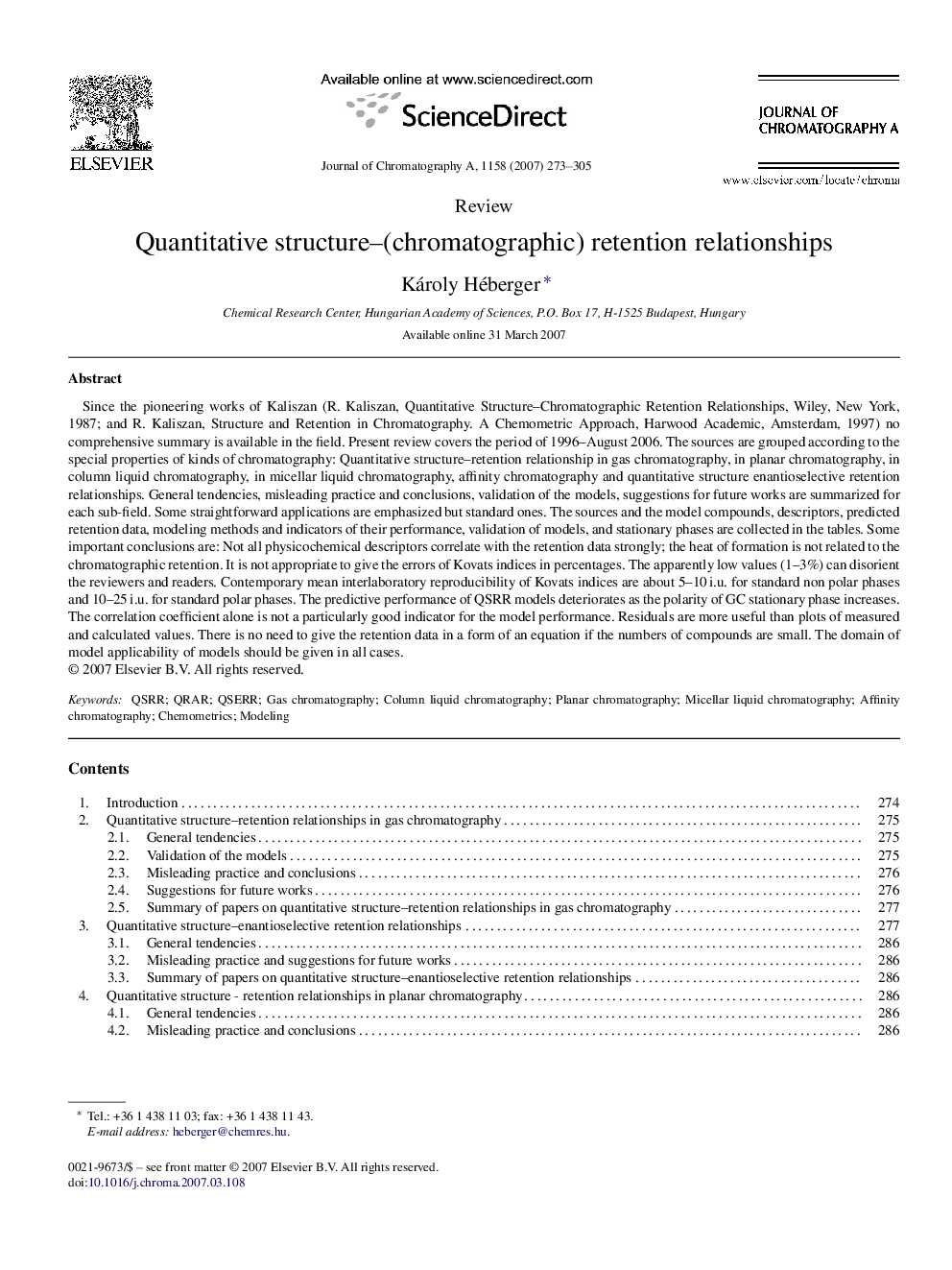| کد مقاله | کد نشریه | سال انتشار | مقاله انگلیسی | نسخه تمام متن |
|---|---|---|---|---|
| 1208410 | 1493745 | 2007 | 33 صفحه PDF | دانلود رایگان |

Since the pioneering works of Kaliszan (R. Kaliszan, Quantitative Structure–Chromatographic Retention Relationships, Wiley, New York, 1987; and R. Kaliszan, Structure and Retention in Chromatography. A Chemometric Approach, Harwood Academic, Amsterdam, 1997) no comprehensive summary is available in the field. Present review covers the period of 1996–August 2006. The sources are grouped according to the special properties of kinds of chromatography: Quantitative structure–retention relationship in gas chromatography, in planar chromatography, in column liquid chromatography, in micellar liquid chromatography, affinity chromatography and quantitative structure enantioselective retention relationships. General tendencies, misleading practice and conclusions, validation of the models, suggestions for future works are summarized for each sub-field. Some straightforward applications are emphasized but standard ones. The sources and the model compounds, descriptors, predicted retention data, modeling methods and indicators of their performance, validation of models, and stationary phases are collected in the tables. Some important conclusions are: Not all physicochemical descriptors correlate with the retention data strongly; the heat of formation is not related to the chromatographic retention. It is not appropriate to give the errors of Kovats indices in percentages. The apparently low values (1–3%) can disorient the reviewers and readers. Contemporary mean interlaboratory reproducibility of Kovats indices are about 5–10 i.u. for standard non polar phases and 10–25 i.u. for standard polar phases. The predictive performance of QSRR models deteriorates as the polarity of GC stationary phase increases. The correlation coefficient alone is not a particularly good indicator for the model performance. Residuals are more useful than plots of measured and calculated values. There is no need to give the retention data in a form of an equation if the numbers of compounds are small. The domain of model applicability of models should be given in all cases.
Journal: Journal of Chromatography A - Volume 1158, Issues 1–2, 27 July 2007, Pages 273–305